The Godfather at 50: Chaos, Coppola and the making of a classic
As the ‘Gone with the Wind of gangster movies’ turns 50 – and returns to cinemas – Geoffrey Macnab speaks to cast and crew including Francis Ford Coppola and Talia Shire about Marlon Brando, near-firings and how one of the most influential films of all time almost went very, very wrong
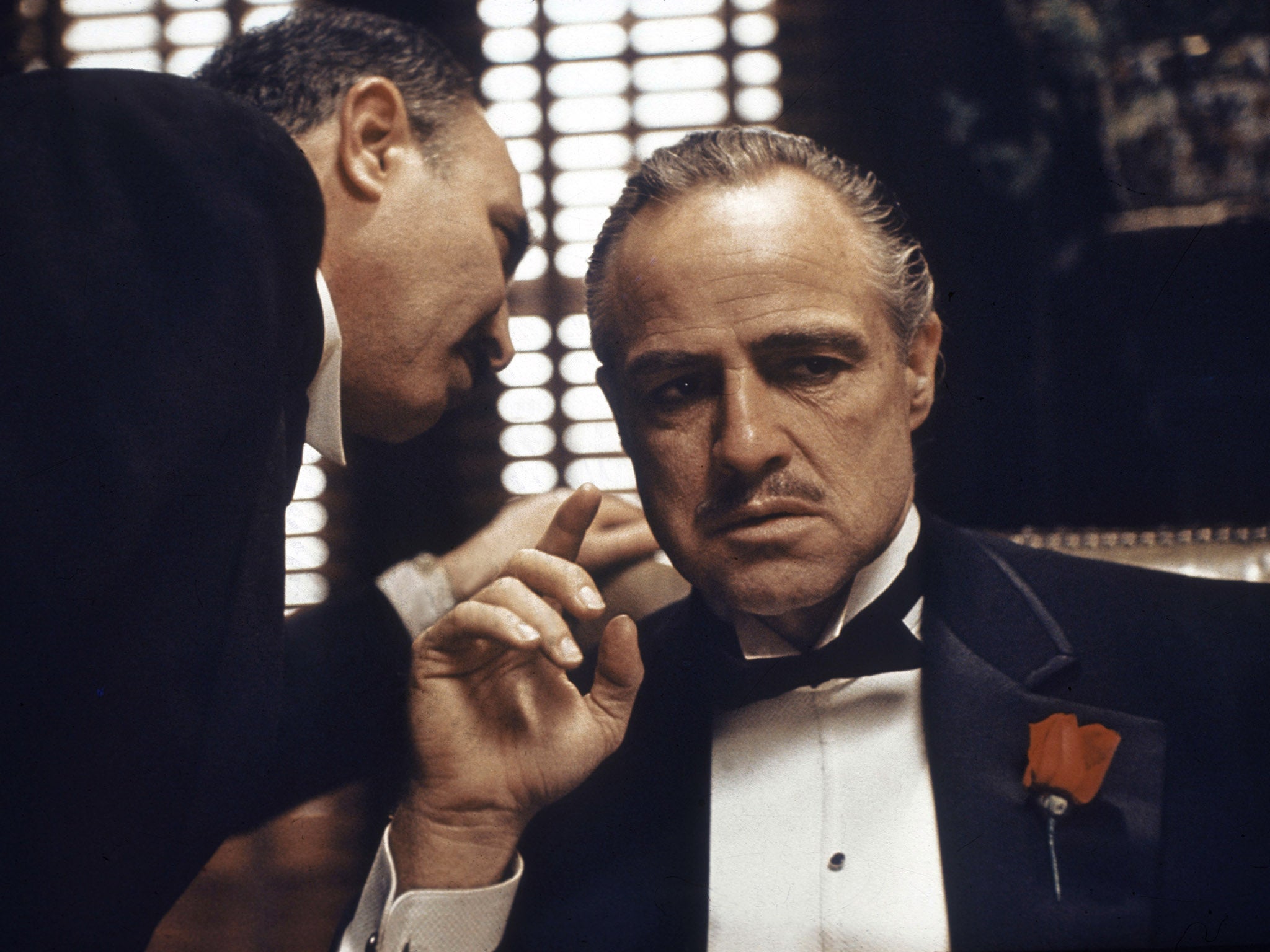
Keep it down, I’m writing a bestseller!” cash-strapped Italian-American author Mario Puzo used to yell at his five children as he sat in the basement of his New York home. Day after day in 1966, he was pounding away on his Olympic Manual typewriter on the first draft of The Godfather. He had no idea then that, just a few years later, his book would be adapted into the classic 1972 film directed by Francis Ford Coppola.
The description of Puzo trying to write his crime novel is contained in Mark Seal’s recently published book, Leave the Gun, Take the Cannoli: The Epic Story of the Making of The Godfather. The novelist had been inspired by reading The Honoured Society, British travel writer Norman Lewis’s 1964 book about the Sicilian mafia. He had also watched the TV broadcast of real-life mobster Joseph Valachi’s testimony to Congress 1963 in which Valachi had committed the cardinal sin of breaking his vow of silence. An editor had told Puzo that if one of his previous novels had had “a little more of the mafia stuff in it, maybe the book would have made money”.
The Godfather movie itself is now so familiar that, at first, you wonder why there is any need at all to revive or celebrate it. A mini-industry has long since grown up around the film and its sequels. They’ve been re-released multiple times. They’re in cinemas again this month in restored 4K versions. Memoirs, critical studies, magazine articles and documentaries have celebrated the Godfather legacy. Next month sees the launch of The Offer, a dramatised TV series about the making of the movie in which Dan Fogler (Jacob Kowalski from Fantastic Beasts) plays director Coppola and sleek British actor Matthew Goode is cast as his patron, the charismatic, cocaine-binging Paramount Studios boss Robert Evans.
Familiarity generally breeds first contempt and then indifference. And yet The Godfather – which was released in US cinemas 50 years ago on 5 March – continues to exercise a strange and enduring fascination on all film lovers. Its combination of artistry and brute violence has rarely, if ever, been matched. Winning Best Picture at the 1973 Academy Awards, it is a true epic, “the Gone with the Wind of gangster movies”, as Newsweek called it.
This was the film that brought its star, Marlon Brando, in from the cold. Hollywood had just about given up on the 47-year-old as erratic, irascible and an all-round box-office liability before Coppola insisted on casting him. Paramount got him cheap, a $50,000 upfront deal with add-ons. Even so, as Seal reports, the trade press mocked him. “No Stars for Godfather Cast – Just Someone Named Brando” was the headline in one industry paper. The bet paid off when Brando went on to win the Best Actor Oscar (and then provoked uproar by sending Native American Sacheen Littlefeather on stage to decline the award on his behalf).
The film was also a coronation of several of the new kings and queens of the silver screen. Al Pacino, soon to become the biggest young star of the era, was a struggling stage actor who had been working as an apartment building superintendent at the time Coppola first considered him for his role. Robert Evans was aghast. Pacino was only 5ft 7in tall – a “runt” in Evans’s opinion. His only previous movie of consequence was The Panic in Needle Park. James Caan, eventually cast at the headstrong Sonny, wasn’t even Italian-American. Diane Keaton was, as Seal points out in his book, then best known for appearing in deodorant commercials. Worse, she had a reputation for being “kooky” – all very well when you’re playing Annie Hall but not at all appropriate for the female star of a gangster epic.
Coppola was telling a very American story about individualism, striving and success. At the same time, this remains one of cinema’s greatest family movies. “Very often, your own family, you love them dearly but you hate them too,” the director, now 82, says of the intensely personal dynamic running through the picture. “Being an Italian-American, of course, although my family were not gangsters [they were musicians], I knew what it was like to live in an Italian-American household; what the day to day routine was; what the meals were like… I tried to give a sense of authenticity to all the life in the movie based on my own experience of my own family.”
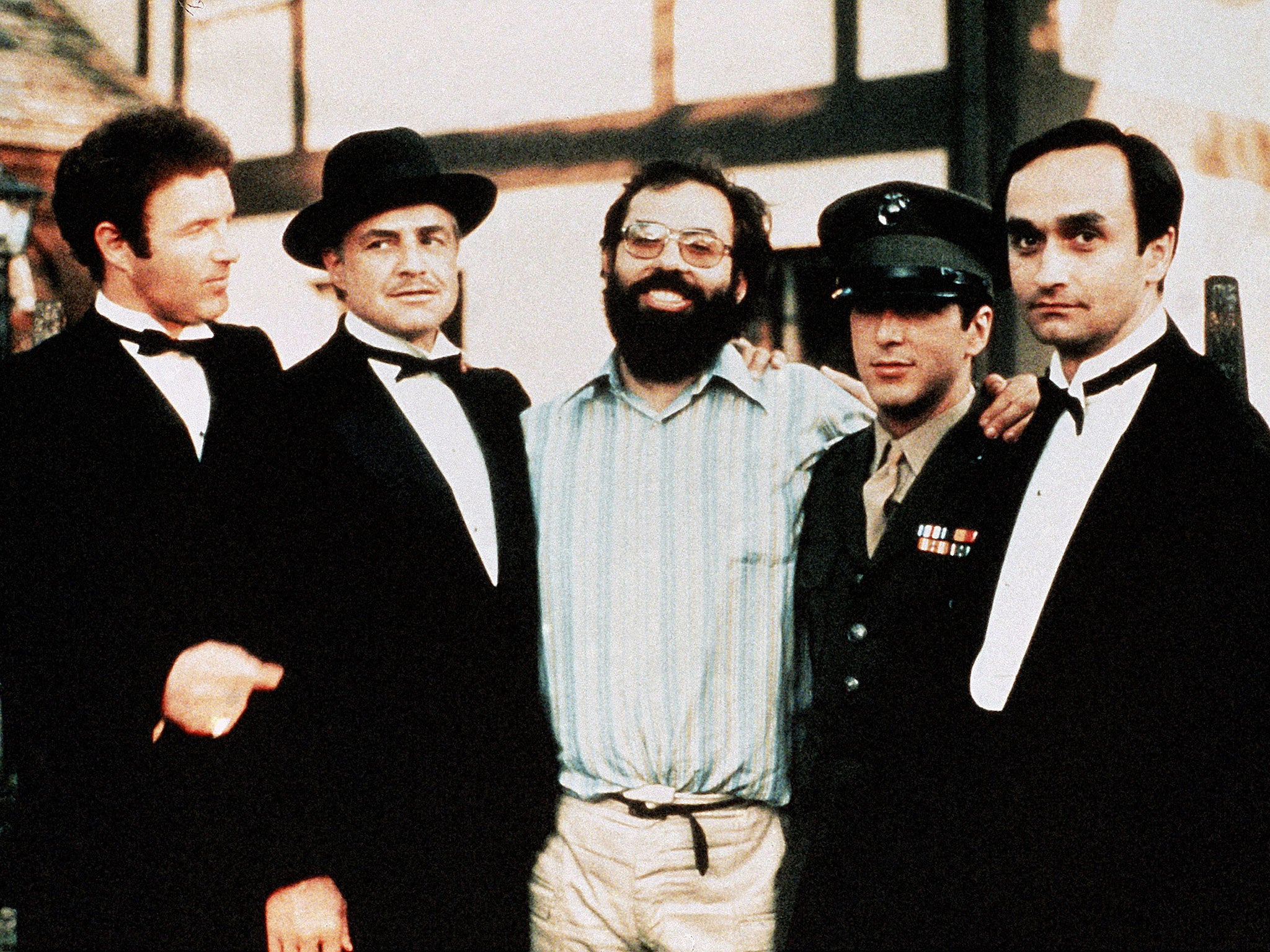
Coppola was 29 years old when he was hired to direct The Godfather. His employers at Paramount Studios were struggling. Paramount’s fortunes had been partially revived by Evans, who had overseen the production of hits such as Rosemary’s Baby and Love Story. But the board at Gulf+Western, the industrial corporation that owned Paramount, still regarded the studio as a major drain on its resources – a problematic business that they needed to sell off.
One of the paradoxes about The Godfather is how well it turned out given how hellish it was to shoot. Early on, Coppola was in a running battle with the Paramount bosses and sometimes with his own crew. Everything from the director’s casting decisions (he had to fight for both Brando and Pacino while holding endless, often pointless screen tests with other actors) to his dark, sepulchral shooting style was questioned. He lived in constant fear he was about to be sacked.

Watch Apple TV+ free for 7 day
New subscribers only. £9.99/mo. after free trial. Plan auto-renews until cancelled.
ADVERTISEMENT. If you sign up to this service we will earn commission. This revenue helps to fund journalism across The Independent.

Watch Apple TV+ free for 7 day
New subscribers only. £9.99/mo. after free trial. Plan auto-renews until cancelled.
ADVERTISEMENT. If you sign up to this service we will earn commission. This revenue helps to fund journalism across The Independent.
Even during post-production, when Coppola chose Italian maestro Nino Rota as composer against the will of the Paramount bosses, his head still seemed to be on the block. The director bluffed, saying that if he couldn’t have Rota, he wanted his name removed from the picture anyway. “Francis was very much under pressure,” remembers Valerio De Paolis, who worked as a production manager on the film. “He had many problems with Paramount. They didn’t understand his concept.” Coppola had “very brilliant ideas”, but the studio bosses simply didn’t trust him. In particular, they were baffled by the darkness of the lighting and the way Coppola shot the faces of the gangsters. “They said, ‘This is terrible; you can’t see faces like that,’” De Paolis says.
Coppola’s sister, Talia Shire, who plays the pivotal role of Connie, Don Corleone’s daughter, likewise remembers the difficulties her brother endured, especially at the start of shooting. “He was so young. There was a ton of pressure… he had a very intense couple of weeks,” she says with evident understatement.
At the time, I didn’t think [Talia Shire] was good casting but then I figured, well, I am going to get fired anyway...
Shire is talking to me shortly after a 50th anniversary screening of The Godfather, which she attended alongside Coppola, Caan and various others associated with the movie. She talks of the musical sweep of the films. “I remember [Coppola] saying it was a waltz – this endless cycle of the family had the sense of a waltz to it.”
The Godfather is a very long way removed from the typical gangster movie – and that, for the Paramount bosses, was the problem. They were wagering the future of the studio on what seemed to them to be a glorified art movie. The tone is set right at the beginning, when out of the dark we see a face and hear the words, “I believe in America, America has made my fortune,” uttered by undertaker Amerigo Bonasera (Salvatore Corsitto). He has come to crime boss Don Corleone (Brando) on the day of his daughter’s wedding to ask a special favour. He wants mob justice against the lowlifes who’ve assaulted his daughter.
Coppola then shows Connie’s wedding, a sprawling, carnivalesque family occasion, shot in a freewheeling, documentary-like style. “Oh boy. It was scheduled for three days and then it went on for two weeks,” Shire says of that sequence, shot very near the beginning of the production. “It had a lot of memories of weddings I went to myself as a little girl.”
Coppola cast Shire against type. In the novel, Connie is a dowdy figure. Young chancers want to marry her not because of her looks but because of her father’s power. The director thought his sister was far too beautiful for the role but gave it to her anyway. “At the time, I didn’t think it was good casting but then I figured, well, I am going to get fired anyway, so let my sister get an opportunity,” the director remembers his fatalistic cast of mind.
Those joyful wedding scenes were captured in an atmosphere of extreme tension. “I was quite under the gun. There were rumours of my being replaced… I was never totally sure that I wasn’t going to get fired,” Coppola recalls. “I recollect the period of making The Godfather with some remembrance of distress because I was very distressed. I realised that my position was not entirely secure.”
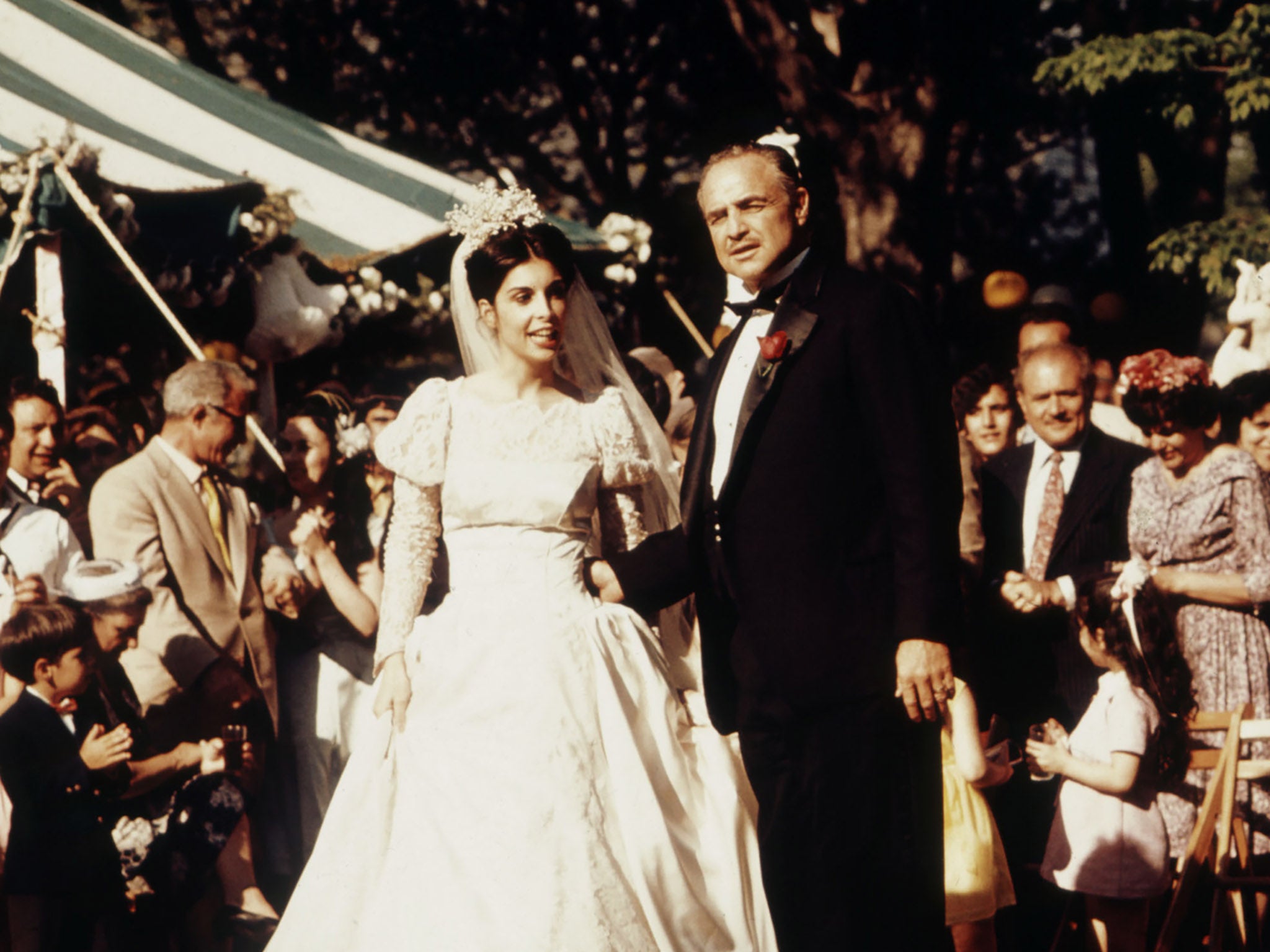
The young Italian-American auteur was also deep in debt. He and his wife Eleanor were living in a cramped apartment with two young children and another on the way. Sofia (who grew up to become a renowned filmmaker herself) was born during production. Only a few weeks old, she was press ganged into appearing in the film’s baptism scene…and two decades later had a starring role as Mary Corleone, Michael’s daughter, in The Godfather Part III (or “Coda: The Death of Michael Corleone”, as Coppola preferred to call it).
During pre-production and the early period of the shoot, Coppola was fighting a war of attrition. Like his main protagonist Michael Corleone (played by Pacino), he was the innocent outsider, caught up in feuds with sinister, shadowy figures whose motivations he didn’t fully understand and who certainly didn’t have his best interests at heart. Like Michael, he surprised everyone with his ruthlessness. Unlike Michael, Coppola didn’t have to hide a gun behind the tank in a restaurant bathroom so that he could kill his tormentors. He proved himself in a different way, with the quality of his work.
“Then it occurred. Whatever that thing is when a movie starts to be born,” Shire says. After a couple of weeks of shooting were in the can, the Paramount bosses had to acknowledge that “he was doing something remarkable, because movies are little tiny pieces… eventually, you could see that something extraordinary was happening. Thankfully, the people at Paramount understood that.”
De Paolis – who has gone on to produce Michael Haneke and Gaspar Noé films such as Hidden and Enter the Void – oversaw the Sicily scenes shot at the end of the film. This is when Michael Corleone flees to the sun-baked Italian island after killing the heroin-toting mobster boss Sollozzo (Al Lettieri) and the corrupt police chief, McCluskey (Sterling Hayden). He remembers the relief the cast and crew felt at being outside the US. “I was working as a production manager,” he says. “Twenty-one was very young but I was already working in that area. Paramount called me to do the Italian section. I think the shooting in Italy was very good, very easy.”
I always thought I was the most outsider, weird person in the movie – ‘Why was I cast in it?’
Much like the rest of the crew, De Paolis had little idea the film would turn out to be such a triumph. He did realise, though, that it was far more realistic in its depiction of Italian-American life than “than any other American gangster [movie]… the parents of Francis were of very, very Italian origin”.
Watching the film in 2022, you can’t help but notice the way the female characters are either relegated to the sidelines or treated very badly. Keaton registers very strongly as Michael Corleone’s girlfriend Kay Adams in the early scenes – but then she all but disappears for two hours before re-emerging only in the final chapters. Simonetta Stefanelli, as the beautiful young Sicilian with whom Michael falls in love, is filmed in glowing close-ups as if she is a fairy tale princess – and then is blown to smithereens when she gets behind the wheel of Michael’s car. Lucy Mancini (Jeannie Linero) seems to be in the film primarily to satisfy Sonny’s lust. Even the family matriarch, Mama Corleone (played by jazz singer Morgana King), is a very subdued presence.
Keaton freely admitted that she blanked The Godfather out of her mind for 30 years. “I always thought I was the most outsider, weird person in the movie, and, ‘Why was I cast in it?’ and I had no voice,” she said, during a cast reunion at the Tribeca Film Festival in 2017. But then she watched it again that year and was startled by its brilliance. “Every single choice that [Coppola] made was just like a genius choice,” she told the BBC’s The Graham Norton Show. “I have to tell you, the movie is genius and it is all that damned Francis Ford.”
The one moment in which a female character is really foregrounded is when Connie goes on a one-woman wrecking spree, breaking all the china and glassware in her apartment after being beaten up yet again by her abusive husband, Carlo (Gianni Russo). The scene sets in motion the chain of events leading to the slaying of Sonny (James Caan) outside the Jones Beach Causeway tollbooth in Long Island. Talia Shire has vivid memories of the day she smashed up the crockery.
“It was scary,” she recalls. “The camera was in the middle. It was like I had to go from place to place to place. I was incredibly aware that if I screwed that up, they would have to reset that all again… and, boy, I didn’t want to screw up.” The plates were heavy and tough to break. She had lost her shoe but had to keep on running, even if she was frightened she might cut herself. “But it was a scary scene,” she repeats. “That character is pregnant. That violence is horrific to see.”
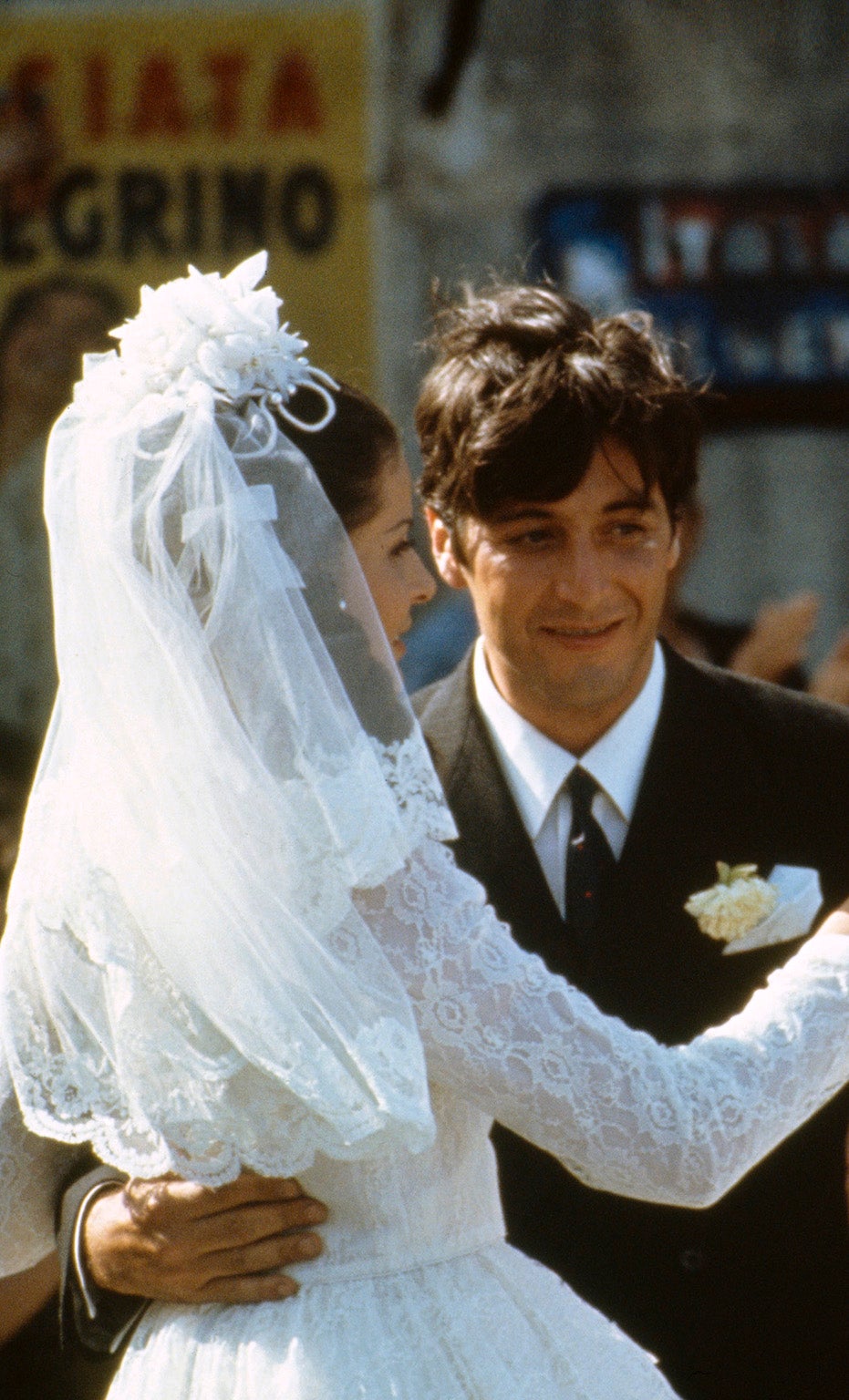
Shire acknowledges that Connie was an “oppressed” character, in a deeply patriarchal world in which she “can’t have an opinion outside of the kitchen”. Nonetheless, she praises her brother for the way he allowed the character to evolve in the next two Godfather films, having reckless affairs and eventually becoming a killer herself. “I have to say, her last evolution, in the third [Godfather] film, she is incredibly powerful and somewhat distorted, if not toxic a little bit.”
Like Brando, Shire had studied with legendary acting teacher Stella Adler. She was therefore well placed to assess Brando’s performance. “I knew from her [Stella Adler] what his discipline was. I could see that at work, in how he designed the character. It was a marvel, to be near this great artist and watch him do his work… Stella Adler believed that you had to have a spine; you had to have actions. And your costumes were an extension of your character. You have to understand the text. You could see in Brando that sense of art. At the very end [when Corleone is playing with his grandson], where he is a monster, with the orange stuck [in his mouth], that is the embodiment of the character – and that is Stella Adler.”
Coppola, meanwhile, speaks of the ingenious way Brando uses a studio cat at the opening of the film. The animal wasn’t in the script but the director placed it in the actor’s hands. You could call it the Blofeld effect. Don Vito Corleone is a powerful, violent, cunning man and yet we see him stroking the creature with infinite gentleness.
One question that still sparks ferocious debate is just where the credit for the success of The Godfather should be laid. Everyone ultimately acknowledged Coppola’s genius but that is only part of the story. The studio bosses who gave him his chance when he was still in his twenties and without a single hit movie behind him inevitably tried to grab their own share of the glory – and the vast profits. So did many others.
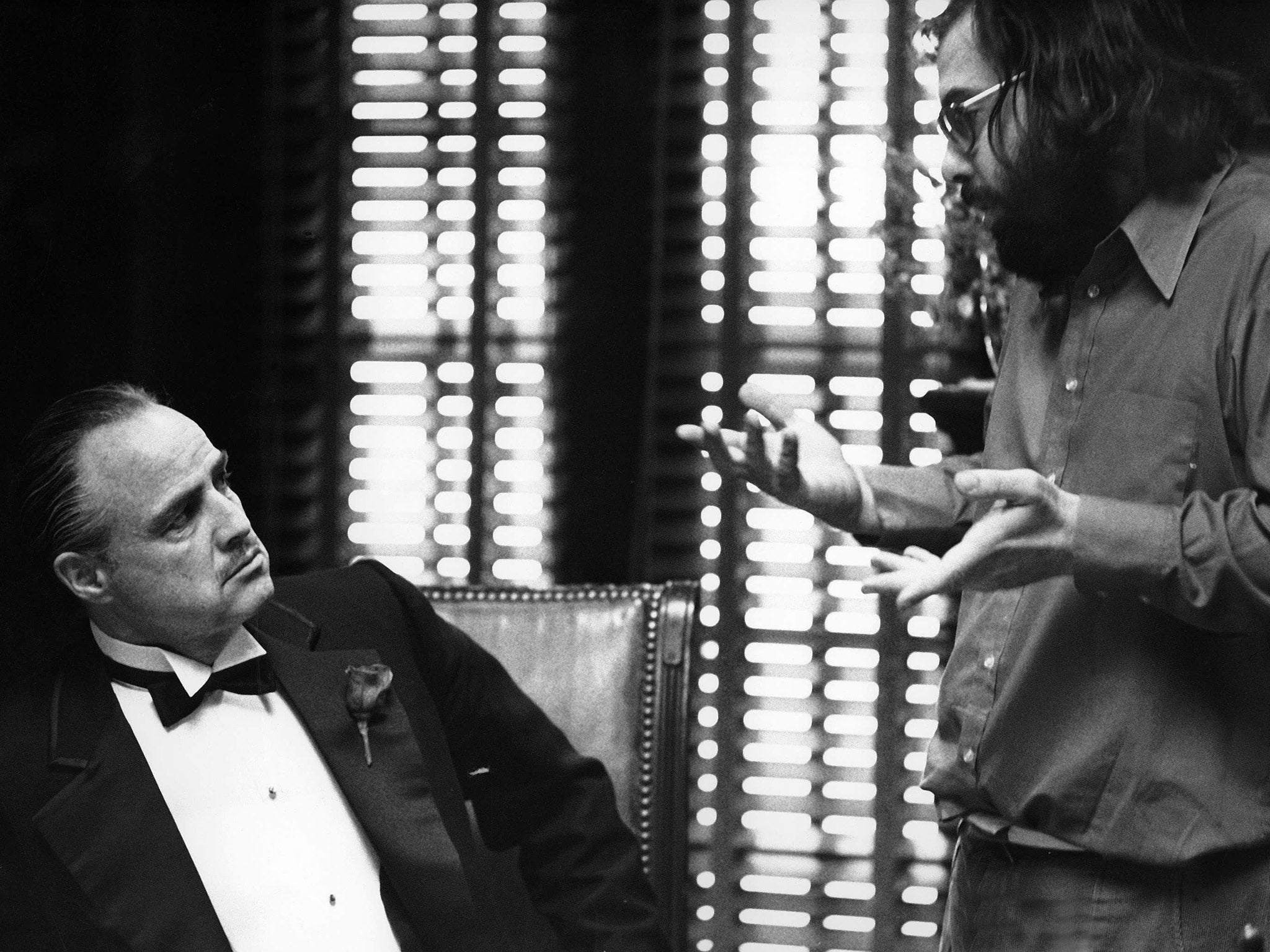
For Mark Seal, it’s only fair to remember the author of the novel from which the movie sprang. “He [Puzo] is the hero of The Godfather,” Seal tells me. “He was a financially down and out writer who grew up in Hell’s Kitchen, New York… he rose from being a pulp fiction writer in New York to [writing] critically well-received but financially unsuccessful novels. He had so many obstacles to overcome,” says Seal.
Puzo, born in 1920, is one of those larger than life, Walter Mitty-like characters who you just can’t help rooting for. He was a trencherman who enjoyed eating buttered pasta almost as much as he liked writing. He was also a chaotic figure, always in debt and addicted to gambling. By the time he was in his mid-forties, his family had just about given up on him. They saw him as a ne’er-do-well. Puzo had dreamed about becoming a great literary novelist, an American equivalent of Dostoyevsky, but had instead ended up writing pulp fiction.
“How extraordinary to see your work become realised as a movie at the very highest level. That was wonderful… and, yes, he loved food,” Shire says of Puzo, who died in 1999. “Francis loved Mario, loved him.”
Evans and his lieutenant Peter Bart (later to become editor of trade paper Variety) at Paramount were crucial figures in the gestation of the movie. They were the ones who bought the rights to Puzo’s novel and hired Coppola. Nor would the movie have been made without Charlie “Hurricane” Bluhdorn, the tycoon who founded Gulf+Western and who put Evans in charge of Paramount. “Bob Evans did what a lot of people would not do when he came to The Godfather,” Seal tells me. “He was the one who could say yes. He green-lighted the movie. Without that, you know what would The Godfather have been?”
Unlike other films from its period, The Godfather hasn’t dated. That is partly because it is set in the mid-1940s – and was already a period piece when it came out. The violence can still make you flinch, too: the killing of Don Corleone’s trusted enforcer Luca Brasi (played by the hulking former wrestler Lenny Montana), especially, is one scene where many viewers will still avert their eyes. (This is where a stiletto is used to pin his hand to the bar while he is garrotted from behind.)
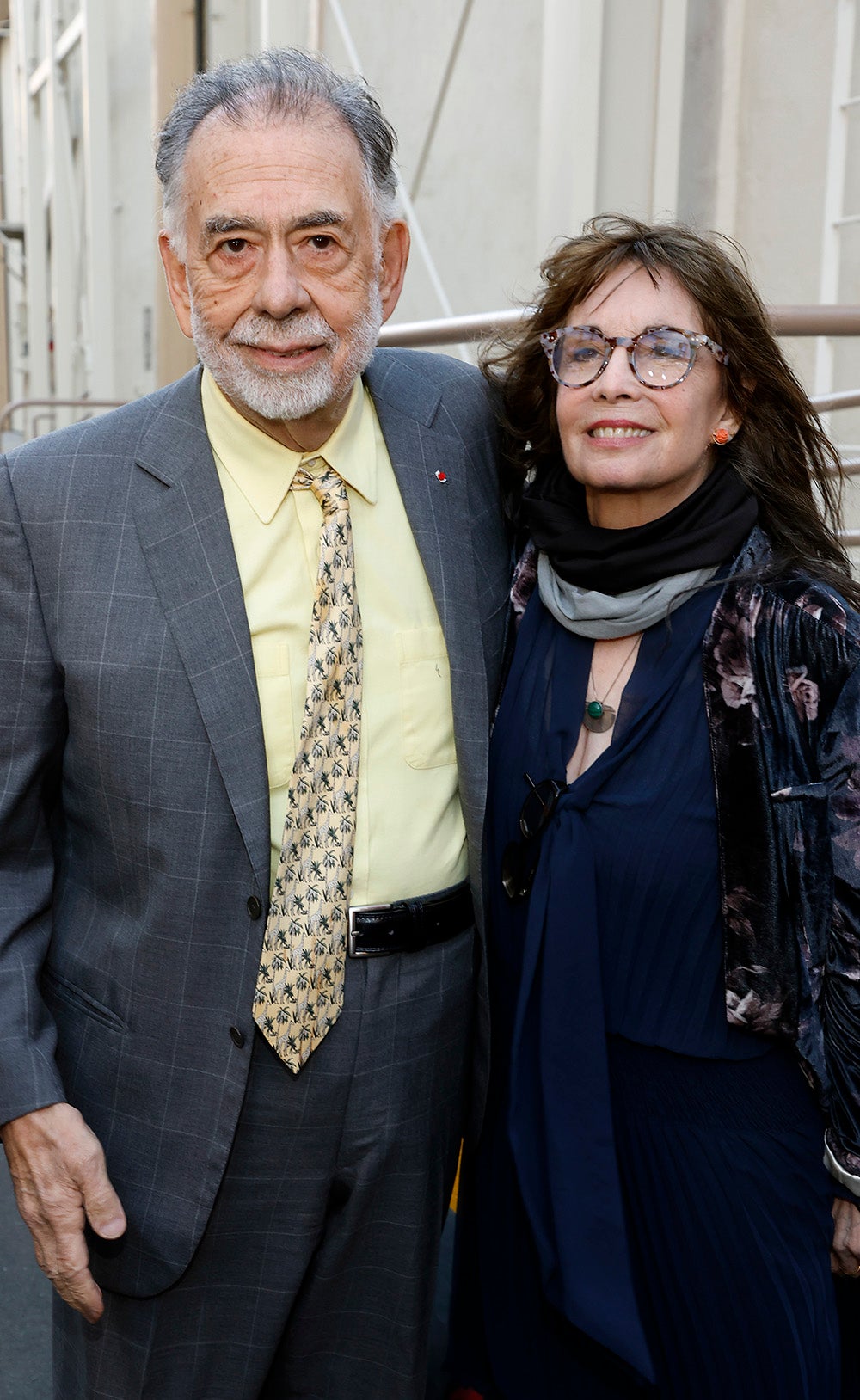
Certain scenes – James Caan’s Sonny being riddled with bullets, the shooting of the stool pigeon Paulie Gatto in the car – could be from an old Jimmy Cagney gangster movie like White Heat or Public Enemy or from more recent pictures such as Bonnie and Clyde. The Godfather, though, delved into places where previous crime movies had never ventured. At times – for example, when the bloodied horse’s head is placed in the bed of the Hollywood studio boss – it has the feel of classical tragedy. “I wanted the violence to be unusual… that it had some unexpected surprise to it,” Coppola says.
Given the director’s well-chronicled aversion to Marvel superhero pictures, there is an obvious irony in what happened with The Godfather cycle. By making a second movie, he was inadvertently ushering in a new era of franchise filmmaking. “We were the first ones who used a number with The Godfather Part II… there never had been an American film called a ‘Part II’,” the director recently acknowledged.
The sequels, especially The Godfather Part II, are revered in their own right but the original is still the main monument. As Seal puts it: “So many films that are 50 years old that you can go and see, while they’re still great, there don’t feel as fresh as they did on the day they came out. But The Godfather still feels as fresh as it did back then – and that’s why you can watch it over and over again.”
Coppola himself has been wary about taking too much of the credit for the film which, 50 years later, still defines his career. (He has directed many other great movies from Apocalypse Now to The Outsiders but mention his name and most fans still think first of Don Vito Corleone). He maintains that the film’s success was a happy accident. “It was the right cast with the right crew for the right audience at the right time. When that happens, when that kind of coincidental symmetry happens, you get a movie that is really a miracle in a way.” With The Godfather, though, he was making an offer to audiences that, half a century later, they still find very hard to refuse.
‘The Godfather’ 50th anniversary restored version is on release now. ‘Leave the Gun, Take the Cannoli: The Epic Story of the Making of The Godfather’ by Mark Seal is published by Simon & Schuster
Join our commenting forum
Join thought-provoking conversations, follow other Independent readers and see their replies
Comments


Bookmark popover
Removed from bookmarks